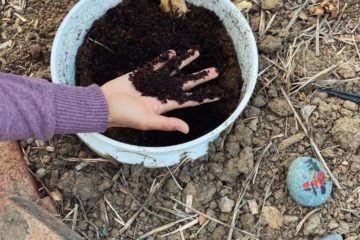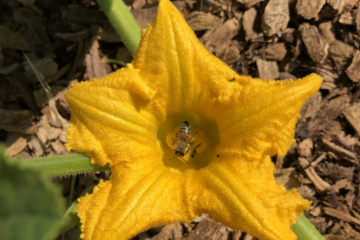By Nicole Shimizu, Communications and Outreach Coordinator
There are so many benefits to gardening. There are physical benefits such as prevention and control of high blood pressure. There are mental benefits such as stress reduction. There are individual benefits such as the satisfaction of growing a plant from sprout to full-fledged vegetable. There are community benefits such as an increased consumption of nutritious vegetables and the development of community connectivity. However, to reap the benefits of gardening, participation is key. Without proactive incorporation of inclusivity, those with accessibility challenges are unlikely to fully participate and rejoice in the benefits of gardening. There are all kinds of inclusivity that must be added to the conversation including language and physical accessibility among others. Today’s focus is cultural inclusivity, its importance, and suggestions on how to incorporate cultural inclusivity into community gardens.
Inclusivity simply means to include those who might otherwise be marginalized or excluded. Some inclusive practices might include creating signage in the languages spoken in the community, giving people individual orientations to the garden, or making the garden customizable in terms of plot size and responsibility. A culturally inclusive garden is one that celebrates diversity and encourages the practice and sharing of culture. In the Global Roots Garden in Toronto, Canada, the garden is “tended by both senior and youth gardeners representing Chinese, Tibeten, South Asian, Somalian, Italian, Latin American, Polish, and Filipino communities” and encourages the transfer of knowledge from seniors to youth through partnerships and allows seniors to participate through language translation by youth (Lowcock, 2012). This is just one example of how a culturally inclusive garden can look and offers a strategy meant to address lingual barriers to inclusion within community garden spaces.
Inclusion matters. Prioritizing inclusion creates gardens that “are: safe and secure for everyone; productive for growing appropriate crops; more easily self-managed and maintained; and more engaging and animated” (Lowcock, 2012). Including culturally diverse crops creates an opportunity to enrich the soil, replenish nutrients, and prevent erosion (Lowcock, 2012). Gardening also encourages empowerment. Individuals are able to share their unique knowledge with one another and keep cultural food knowledge alive which is amazing since many are isolated from the food system.
Cultural inclusivity in community gardens can also support cultural identity through food. A report written by Victoria Ostenso details reasons why food culture is vital to supporting a diverse community. Ostenso uses the experience of immigrants to highlight the importance of food culture as she states that “For immigrants, food can be a medium for maintaining traditions and for creating new ones” (Ostenso, 2018). By keeping their food practices alive, communities are able to continue to use their cultural knowledge. This emphasizes the connection between diet and identity to support a culturally inclusive community. The deep connection between food, identity, and access to cultural foods is one of the main reasons to be mindful when thinking about the need to respect, acknowledge, and include culture in community gardening. Community gardening offers a way to grow local, culturally diverse foods for members of the community to easily access and enjoy.
Wayne Roberts, the former Chair of the Toronto Food Policy Council, offers some recommendations to facilitate a more inclusive movement for local food. First it is important to advocate for why inclusivity is important. Everyone who is interested in community gardening should feel welcome and encouraged to join their community garden, especially because of all the wonderful benefits of gardening. Second, it is important to coordinate; think about ways that gardens can connect to local cultural organizations to get them involved. Third, facilitate spaces and make it easier for people of different backgrounds to join.
Some additional steps can be taken to plan for inclusivity in the garden. These include creating a defined vision for the garden that includes cultural inclusivity, identifying a list of objectives to achieve the vision, getting feedback from the community to involve them with the process of creating a more inclusive space, connecting with cultural community resources to encourage dialogue around inclusivity in the community garden, creating a diverse board of leadership to ensure that all voices are heard, and making sure to facilitate a space where everyone feels heard and supported. Planning for cultural inclusivity “is an iterative process of learning, relearning, and adapting to new contexts” (Ostenso, 2018). It acknowledges the weaknesses in current systems and makes meaningful changes to incorporate cultural inclusivity into community gardens (Ostenso, 2018). These suggested steps are not an exhaustive list, but they are a solid starting point for getting the ball rolling to incorporate active cultural inclusivity practices into community gardens.
Sources:
Lowcock, Ashley. “Inclusive Community Gardens: Planning for Inclusive and Welcoming Spaces in Vancouver.” City of Vancouver, 2014, https://sustain.ubc.ca/sites/default/files/2014-02_Vancouver%20Inclusive%20Community%20Gardens_Lowcock.pdf
Ostenso, Victoria. Planning for Whom?: The Practice of Cultural Inclusion in Alternative Food Initiatives in Metro Vancouver. 2018. https://open.library.ubc.ca/cIRcle/collections/ubctheses/24/items/1.0370966.



0 Comments